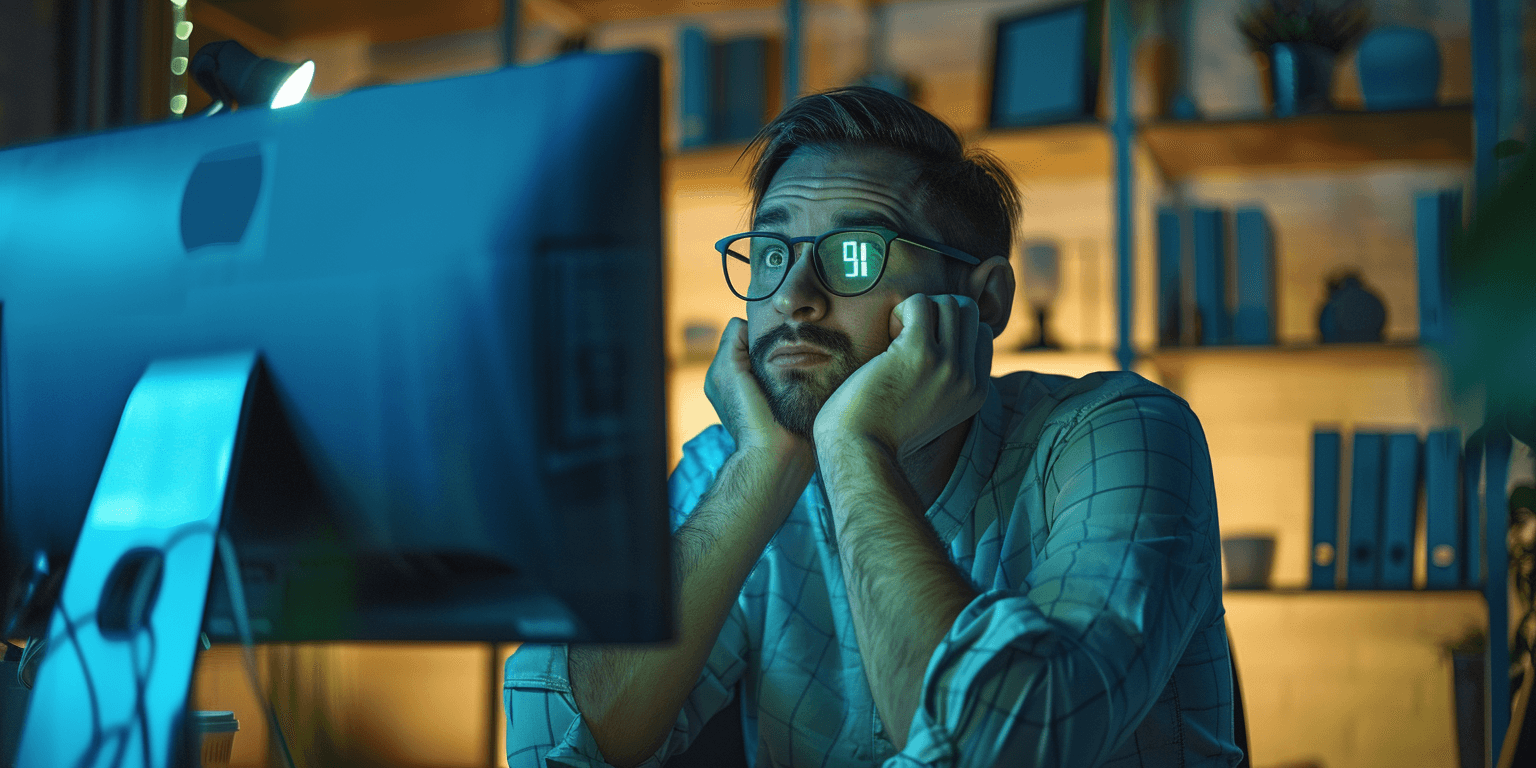7 Seconds to Success: How the Right Design Changes Everything Introduction The goal of this article is to explain how well-thought-out design can enhance user experience and improve conversion rates. We will share proven tips and recommendations based on the experience of our agency. We successfully implement projects by paying special attention to design details, usability, and overall aesthetics. Examples from our portfolio will show how properly organized visuals and thoughtful navigation can improve site interaction and increase conversion.
The Psychology of Design Perception
The psychology of design perception plays a key role in creating effective and attractive interfaces, especially regarding color palettes and typography. Their proper selection can significantly affect users' moods and decisions, as well as the overall readability and ease of perceiving information on the site.
Color Palette
In website development, the color palette plays a critical role, combining aesthetics and psychological impact on users. Modern trends and understanding of color in web design continue to evolve, emphasizing the importance of choosing the right colors to achieve the desired impression and user behavior. Here’s a modern perspective on the use of color in web design:

Blue remains a popular choice for websites related to finance, technology, and social networks, highlighting trust, reliability, and professionalism. Using various shades of blue allows designers to manipulate perception, making it more flexible for different purposes.
Green maintains its association with growth, health, and tranquility, making it an excellent choice for sites related to nature, ecology, health, and sustainability. Recently, green has also been used to highlight aspects of financial growth and innovation, especially in fintech and startups.
Red continues to be a strong color for attracting attention and creating a sense of urgency. It is effective for call-to-action (CTA) elements, promotions, and discounts. It is important to use red cautiously to avoid excessive anxiety or aversion.
Yellow and Orange are often used to create a sense of energy, optimism, and happiness. They can attract attention and are suitable for highlighting key elements but should be used sparingly due to their potential to cause eye strain when overused.
**Black, White, and Gray provide balance and flexibility in design, allowing other colors to stand out. Black adds elegance and strength, white – purity and space, and gray can serve as a soft background to smooth the contrast between brighter colors.
Emphasis on Accessibility. Modern web design also focuses on accessibility, paying attention to contrast and text readability for visually impaired users. The use of color should comply with WCAG (Web Content Accessibility Guidelines) standards to ensure content accessibility for all users.
Psychological Impact and Cultural Differences. Understanding the psychological impact of color is important, but so is considering cultural differences in color perception. Color can have different meanings in different cultures, so when developing international sites, it is important to research and account for these differences.
Choosing color in web design is not just a matter of aesthetics but also a strategic decision affecting user experience, branding, and conversion. Combining scientific research, creative approaches, and testing is key to creating effective and attractive design.
Typography and Readability
The modern experience of website development in 2023-2024 reflects several key trends in typography and readability, emphasizing the importance of creating impressive visual and user experiences. Here are some of the main directions:

Font Combination: Using various fonts to create a unique addition to the site design is becoming increasingly popular. Skillful font combinations of different styles allow designers to create an infinite number of unique designs based on specific tasks.
Minimalism in Typography: There is a shift towards using simple sans-serif fonts. This trend emphasizes the desire for clean and simplified design, making it more modern and improving readability.
Animated Text: Typography animation is becoming a key element in attracting users' attention. Animated headlines and subheadings help make the site design more dynamic and interesting while not overloading the interface and maintaining high page load speeds.
Bold Fonts and Large Headings: Using bold fonts and large headings continues to be popular as they contribute to better visibility and content perception, especially on mobile devices where users' attention is fragmented.
Interactivity and Storytelling through Typography: The use of typography for storytelling and user engagement is expanding. Interactive text and elements that change depending on user actions deepen interaction and create a unique user experience.
Design Elements and Their Role
Design elements play a critical role in creating websites and applications, providing users with an intuitive and effective way to interact with content. Key elements such as navigation, visual content (images and videos), and call-to-action (CTA) elements collectively define the user experience (UX) and can significantly influence a product's success or failure. Let’s take a closer look at the role of these design elements.

Navigation
Clear and intuitive navigation is fundamental to providing a positive user experience on a website or application. Well-structured navigation helps users easily find the necessary information, reducing the likelihood of bounce and increasing satisfaction with the product. For example, concise and understandable menus, logical organization of sections and subsections, and the use of universal icons can significantly simplify access to information. This not only improves overall site navigation but also encourages users to delve deeper into the content.
Images and Videos
High-quality visual content can attract user attention, increase engagement, and build trust in the brand. Images and videos can tell the story of a product or service much more effectively than long text descriptions. They can also evoke emotional responses, making the content more memorable. Using professionally made photos, high-quality graphic images, and videos increases the chances that the user will be engaged with the content and perform the desired action on the site.
CTA Elements
Well-designed call-to-action elements can significantly improve conversion on a website or application. They serve as an important reminder to the user of the next step they can take, whether it be purchasing a product, subscribing to a newsletter, or receiving a free consultation. CTAs should be prominently displayed and easily noticeable, while still harmonizing with the overall page design. Using contrasting colors, concise and persuasive wording, and strategic placement on the page can significantly enhance the visibility and effectiveness of call-to-action elements.
Improving User Experience through Design
Improving user experience (UX) is a key factor in the success of a website or application today. Clearly understanding the needs and expectations of your target audience allows you to create a product that not only meets their requests but exceeds them. One of the main aspects influencing UX is design, including adaptability, loading speed, and focus on user scenarios.
Responsive Design
In today’s world, people use the internet from various devices—from smartphones and tablets to desktop computers and laptops. Therefore, responsive design is not just a "best practice" but a necessity. Responsive design ensures that your site will look and function equally well on any device, regardless of screen size. This means that design elements such as menus, buttons, and texts automatically adjust to the user’s screen size, making the site comfortable to view from any device. It is not enough to make the site "readable" on a mobile device; you need to ensure full interaction with the content, just as on a desktop.
Loading Speed
In the age of high-speed internet, users are not willing to wait long for pages to load. Research shows that most users leave a site if it takes more than 3 seconds to load. Optimizing design elements to speed up page loading is critical to retaining visitors' attention. This means optimizing images, using modern compression formats, minimizing CSS and JavaScript, using caching, and, if possible, choosing lighter fonts. Each of these elements plays a role in ensuring fast loading and can significantly improve users' perception of your site.
User Scenarios
Testing various user scenarios helps identify and correct design issues that may not have been obvious during development. User scenarios are assumptions about how users will interact with your site or application to achieve their goals. For example, a scenario may include finding specific information, completing a purchase, or subscribing to a newsletter. Testing these scenarios allows you to see how easy and intuitive it is for users to perform these tasks. Sometimes the slightest inconvenience in navigation or excessive steps can deter users. Correcting these shortcomings will make your site not only more convenient but also increase the likelihood of achieving business goals.
Case Studies from Madseven
We create websites where every pixel is thought out—attractive, functional, and user-friendly. Project examples vividly demonstrate our approach to work and the key principles we follow when developing a site.
Project Examples
Website for Russian IT Company Axios Group: In the project https://axios.group/, various design elements were used, among which hybrids of generative images and manually created animations stand out. These elements were carefully integrated with AI-generated images, achieving a unique visual effect. These design techniques not only enhance the site's aesthetic appeal but also emphasize Axios Group's technological focus and innovative character. A key aspect of our work was improving the user experience through thoughtful design. Focusing on visual effects, we aimed not only to create a beautiful interface but also to ensure its functionality and usability. The design elements were developed to simplify site navigation and make information easily accessible, providing a positive experience for all visitors.
Website for the Cloth Factory Paper Manufactory: The project https://pzbm.ru/ embodies the unique features of modern design, intersecting with the rich history of the factory. The magic begins at site loading. The loading page is designed in the company style, so site visitors do not get bored. The main task of this project was to combine the company's rich history with modern technological design. The main page of the site and the history section were developed using a horizontal orientation. This technique allowed us to achieve the "album" effect, where significant events in PZBM's history "come to life."
Other works by Madseven.

